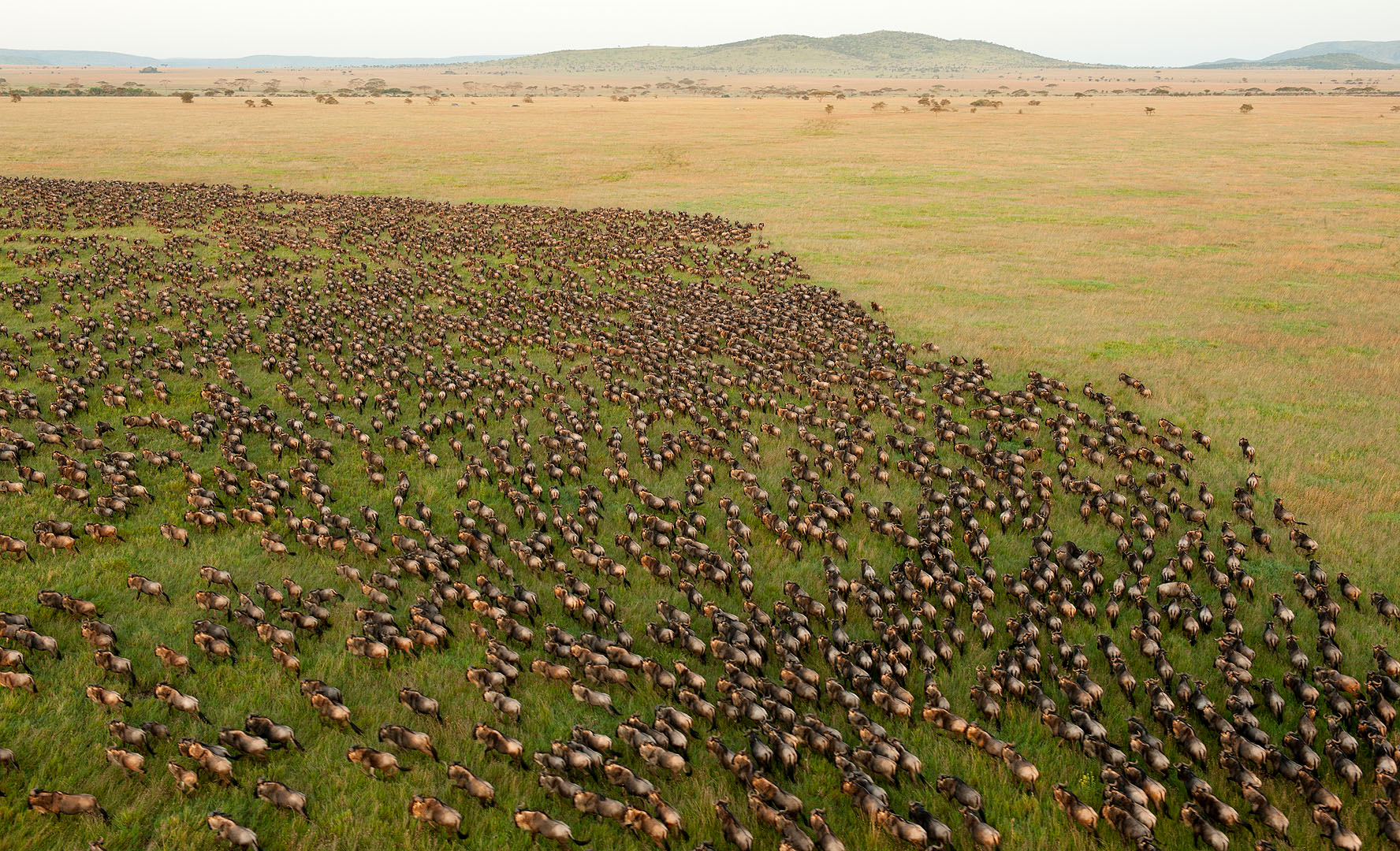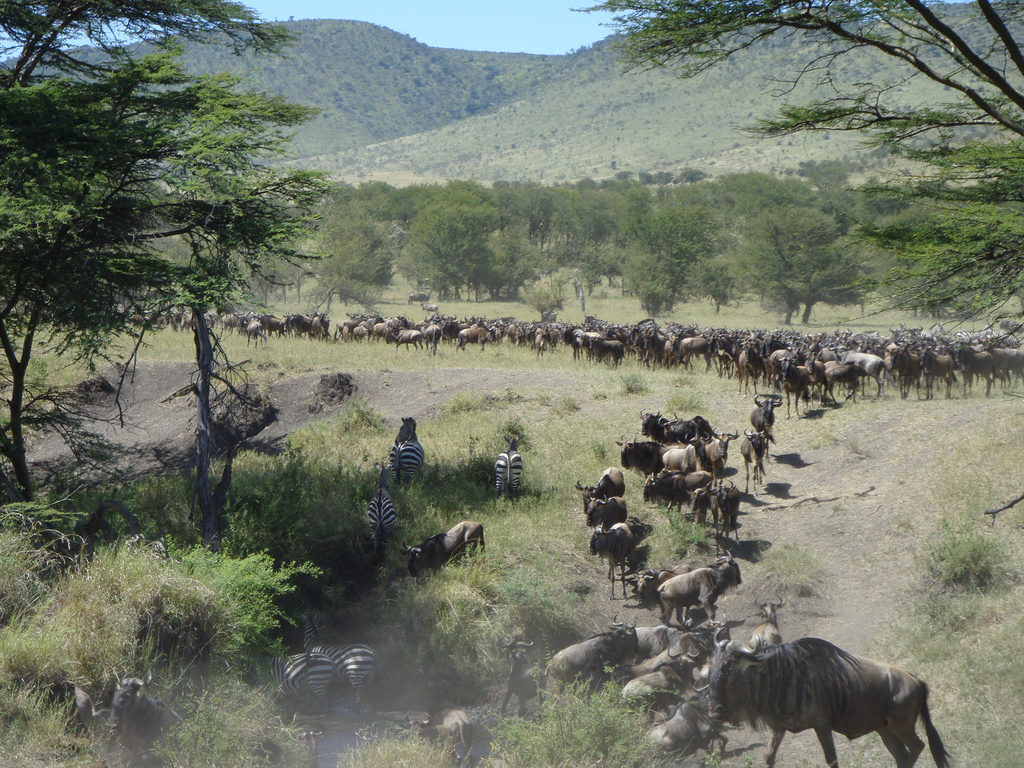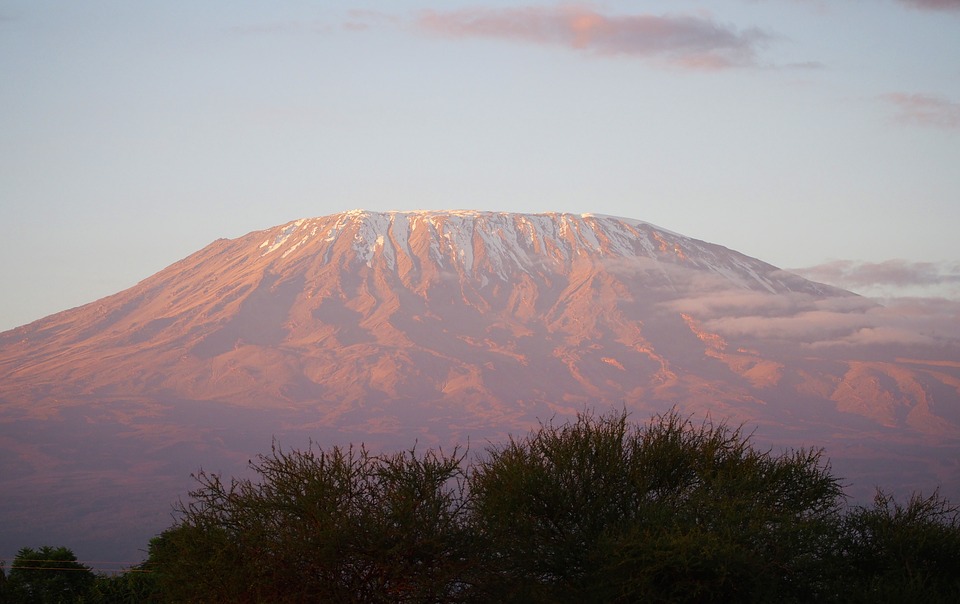The great wildebeest migration is one of the most outstanding natural phenomena that you are ever likely to see with the naked eye. Over one million wildebeest moving as one solid unit across the planes of Africa in search of food and grazing land on a journey that is perilous as it is arduous. Throughout the journey the wildebeest must survive threats from come of the World’s most dangerous predators and cross death-defying rivers as they travel form the southern Serengeti to the Masai Mara national reserve in Kenya. If you want to catch a glimpse of the biggest mass movement of any animal in the World, then here is a guide on where the wildebeest travel and what may be your best chance of catching a glimpse.

The Beginning
Around November-December time, the wildebeest arrive on the planes of the Serengeti during the short rains feeding on the nutrient-packed fresh grasses. The wildebeest remain in the regions of southern Seronera throughout January, February and March as they birth and care for their young calves. There is some gradual movement north in early April and then towards the end of the month, the migration north commences.
The Long Journey North
The beginning of north is the first tim that you will see the striking image of the wildebeest collective, all heading north to seek fresh grazing and fresh water. The regions of north Seronera and Moru Kopjes are, by this time, filled with hundreds of thousands of wildebeest and often you will see some zebras and gazelles with the group.
June sees the one of the biggest challenges on the journey for the wildebeest as they hit the Grumeti River. The wildebeest generally gather on the south side of the river and wait for the rest of the group to catch up. Crossing on mass provides more protection against predators such as lions and crocodiles and it also allows more assistance for the young. This will be the first of two tough rivers that the group will need to cross during their journey.
Grumeti Reserve
Throughout July and August the wildebeest will move throughout the Grummet reserve, a great opportunity for tourists to spot the impressive migration. The Serengeti park is also a great place where tourists can see the group and many gather in the national park each August to witness it.
September
One of the most perilous months for the wildebeest as they face the great Mara River, a wide river with dangers on either side. The gushing river leaves the wildebeest with frantically dashing as their only option which can be quite a spectacle. Those who can make it across the river will have achieved 90% of their journey and from here they will start to gradually flow south through the Lobo area of the Serengeti National Park. Finally the wildebeest will find their way back to the start around October where they will once again feed on the fresh grass of the southern Serengeti, before starting the journey all over again. To learn more about the great migration, click here.




